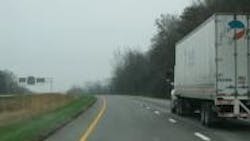FMCSA misses the boat on HOS, EOBR proposals
Just before Christmas, the Federal Motor Carrier Safety Administration (FMCSA) released the new hours-of-service proposal. Then, this morning, it did the same for an electronic onboard recorder (EOBR) rule.
Whether you are in favor of either rule or not, if they come to be, then the EOBR rule should be used to allow for more flexibility in a driver’s day. By failing to do so, FMCSA is wasting the advantages an EOBR can bring.
The proposed HOS rule (which you can read all about here) doesn’t make a determination on a 10-hour or 11-hour drive day, but it does stipulate a 34-hour restart, although that restart period must include at least two consecutive midnight to 6 a.m. time periods, in essence creating a longer restart period for nearly all drivers.
The EOBR rule would require the onboard devices for virtually all carriers with only a few minor exceptions. (Read the rule here)
Each rule will likely face legal challenges, so how the final rules appear may be different still. However, if FMCSA really wants to create safer roadways, it should have used the EOBR rule to complement the HOS proposal.
Rather than requiring drivers to stay on the roads for 10 or 11 hours even when they may be drowsy simply because that’s the allowable “drive time,” the use of an EOBR could have allowed the agency to stipulate 11 hours of available0 drive time within a 20-hour period, for instance, with the EOBR capable of monitoring that compliance.
Would this still be a problem? Of course, although no more-so than the current proposal, I’d guess. But, by using an EOBR to record actual driving time, a drowsy driver could pull off the road and rest for a period of time to refresh their batteries when they need to, rather than pushing on because they only have four more hours to complete their driving for the day.
Now that would really make our roads safer.
